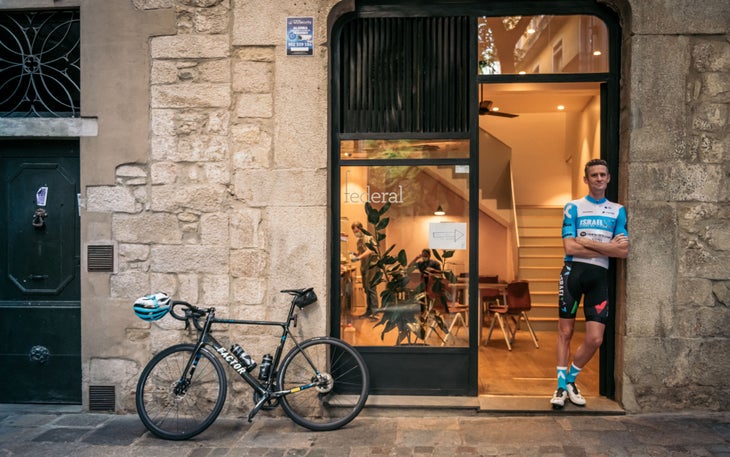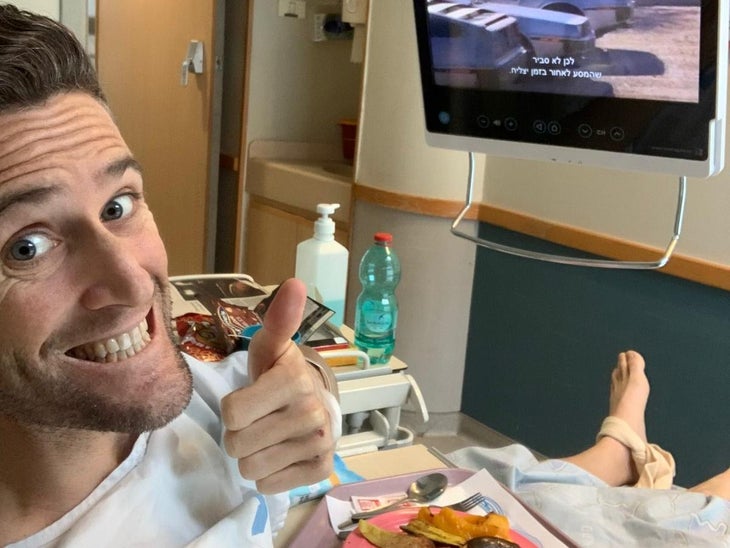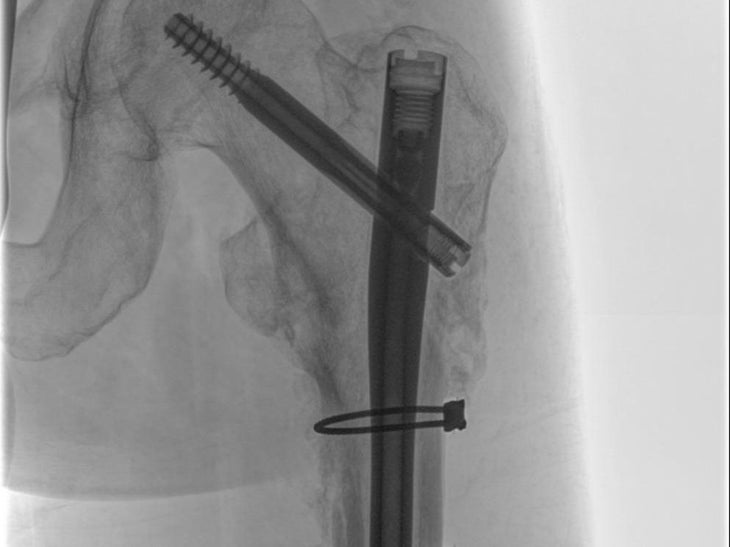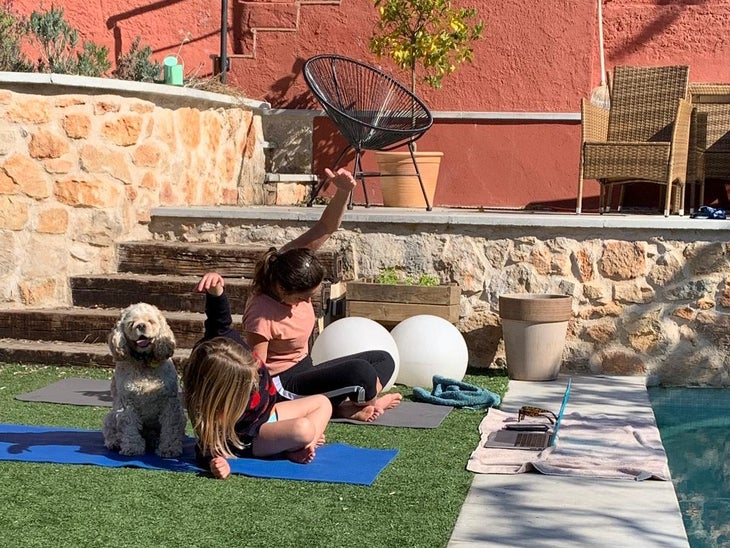Heading out the door? Read this article on the new Outside+ app available now on iOS devices for members! Download the app.
For the past two months, VeloNews has reached out to pro riders and other personalities from the sport to get a glimpse into their lives during the shutdown in our “Day in the Life” series. Now, with a potential race season on the horizon, we’re asking about their fitness and forward planning.
Being in lockdown for two months was a blessing in disguise for Rory Sutherland.
Like everyone else, the Australian has lamented the global implications of the coronavirus pandemic that’s stopped cycling in its tracks since mid-March. Yet in many ways, the timing couldn’t have been better.
In December, the experienced road captain broke his femur in a freak accident at a team camp in Israel where he was getting to know his new teammates at Israel Start-Up Nation ahead of the 2020 racing calendar in what is the team’s first season in the WorldTour. Instead of hitting team camps and early season races, the 38-year-old underwent surgery and was perhaps looking at an early end of his racing career.
The delay of the international racing calendar until August, however, gave Sutherland the extra space and time he needed to fully recover.
“For me personally, take away the global pandemic, which is horrible in every sense, but for my own personal situation, it was a blessing that I could do it this way,” Sutherland told VeloNews.
With the breathing space that the lockdown and racing stoppage has afforded, Sutherland is confident he’ll be back up to speed if and when racing resumes later this summer.
VeloNews spoke to Sutherland via telephone from his home in Girona, Spain, where he lives with his wife, and two children. After two months of near-total quarantine, Sutherland and his family are now taking the first steps toward returning to a pre-pandemic lifestyle.

Location: Girona, Spain
What are the current training restrictions where you are?
Since May 4, professional athletes with a valid license can train so long as we stay within our province. We have to respect the rules on distancing, but I always train alone anyway. It’s my thinking time. In Spain we had seven weeks in a general quarantine, so I was seven weeks on the trainer. For me personally, I’m lucky to be in a privileged situation. We have a home with a yard, we have two kids at home, and I’m on a team that unlike some is not in a bad financial situation.
Has the suspension in racing helped at all with your recovery?
I’m also lucky that I was starting from zero from the accident I had in December. I wasn’t in top form, so I wasn’t missing anything anyway. So for what happened to me, those seven weeks on a trainer was exactly what I needed coming back from the injury I had. I could regain fitness in a stable, controlled environment, so that I could improve and recover in the best way possible. If I was on the road, there are more variables, and there is a risk of over-training or injuring something else. On the trainer, we can be more specific, without the stress to be race-ready in a certain amount of time. We could do things properly, it takes the pressure off, and makes the training so much better.
Hadn’t you already returned to training on the road a bit before the lockdown started in Spain in mid-March?
I was on the road for two weeks in early March, and I had already overdone it. I had overused a muscle that wasn’t ready to be used. It took away any mental stress, and due to the fact that I was starting from zero, I could have a goal and a progression on a daily or weekly basis. I have been improving, and I could not fail because I was going in only one direction. I consider myself lucky, because if and when we do return to racing, I will be 100 percent ready. And I will be mentally stronger because of what I went through. It’s almost too much time now, because I am nearly ready to go, and we still have to wait until August.

What’s your motivation to race right now?
I haven’t raced since Paris-Tours (in October), so it’s been a while. My motivation is definitely very high, because I’m with a new team, and with the time and respect they’ve given me at Israel Start-Up Nation, which has been so phenomenal. I wish I was working with these guys 10 years ago. It’s a different mentality. There’s less ego, and it’s about coming together as a group. Everyone chats at the dinner table, there’s less BS. Because this team is so new, they don’t have a lot of pre-conceived ideas. It’s similar to what we’ve seen at Sky or Mitchelton-Scott. They don’t have all that history and tradition, so they can look at things with fresh eyes. New teams can take the best of both worlds, but look at the sport with wider eyes to the future.
What was your routine during the lockdown?
Getting into a routine is very important, and the lockdown made everyone change their plans. We’re lucky to have the resources to get everything done at home. I have a home trainer with a little gym area set up, with some gym equipment. We have two kids at home, so they’ve been studying every day, with video chats, and every kid has a Google drive, with e-mail, calendar, and Google meets. Luckily, my wife has a double master’s degree in education, so that’s been a great help. So in the mornings, I would train in the garage, and do my sessions until around noon. And then in the afternoon we would spend time together as a family. We’ve been able to enjoy the kids, do some baking. My wife and I figured out that this is the longest time we’ve been together without my travel in the past 20 years. The kids said we’re not in a rush anymore. We like to be incredibly positive in every situation we’re in.
What kind of indoor trainer do you have?
I have an Elite Direto, and a full TV setup with Zwift. My wife and kids have also been using the home trainer, so sometimes there is a long wait.
So what kind of work were you doing during the lockdown as part of your recovery?
The best thing about using an indoor trainer is that things are in a controlled environment. There are less moving parts then when you are on the road, when you have to steer, corner, balance, and watch out for traffic. We had little goals and targets along the way. If you’re doing an effort of 400w on the trainer it’s so much easier to hold that exact effort than when you’re on the road because so many things are happening.

How difficult was it for such a new team to suddenly be isolated from each other for so long?
The team has been fantastic at staying in touch. We have guys in Andorra, France, Spain, and Italy who were in complete lockdown. They couldn’t even go outside. We were all going through a similar situation. Every weekend there was a ride on Zwift. One of our sponsors bought masks, and we donated masks in New York City and Canada, and other parts of the world. It’s in these situations you see who shines, you see on the team who is thinking about the team and the group. The vast majority of riders stuck together and talked about the future. It may be my position and age, but I’ve become one of the guys that people connect with, especially the younger guys who are looking for advice. I’ve seen it all in my career, so when you start hearing in the press that teams are cutting wages and maybe closing, people are scared. My role was to be an anchor between management and riders. A lot of athletes are afraid to make comments to management for fear, whereas I am not, so one of my roles is to bring that information to management in an anonymous way to work through some stuff. It’s helped pull the team together, and helped me to get involved with the management side of the team on how we work together.
There is now a racing calendar, is the team starting to build programs for riders?
All the DS’s are speaking about that now. Everyone is inspired by it, because all of our jobs just stopped for two months. People are seeing the light at the end of the tunnel. I’m in a Zoom meeting next week with the sport directors, trainers, and doctors to talk about the medical side, what is it going to look like for us, and how are we going to approach things. There are so many questions, who can come, who’s in Europe? Will they be quarantined? What’s the protocol for which riders to race together? Will small groups be separated? The management has a lot of work to make it the best situation. Will Europe even have open borders?
How confident are you that the sport will see some racing in 2020?
I am. One of the main things specifically about Europe is that the protocols are coming from health organizations, not from the financial side, or from a sponsor. The government is saying, ‘these are the rules, and this is what has to happen.’ Everyone is on the same page.
You’re also involved in the CPA rider’s union, what’s your view on the revised racing calendar in terms of how much pressure it might put on the riders?
I think it’s fantastic. It’s an incredibly difficult puzzle to put together. We have a CPA riders’ group where we can all communicate, with a rep from every team. I sent out a message to say it’s important that when ASO and UCI came together to make a plan for the Tour de France that everyone say something positive about it. I saw some negative comments, but this is the time that we need to be positive. The calendar gives people motivation to train so you’re not just riding around for nothing. It gives our sponsors something to look forward to. The fact the Tour de France is on the calendar and we’re going in that direction, whether it happens or not we’ll see, but at least it’s something for everyone to work toward. I say as a sport we need to do the best with what we have, instead of being negative. Opinions are like assholes, everyone has one.
So considering your injury, we’ll see you racing this year?
If we can race, yes. Not many riders who have had such a severe leg break as mine might have come back. It was a lot worse than what was told me at the time. A good friend of mine is a team doctor at another team, and he said he was happy to see the X-rays and how well things came out after the surgery, because he said when he first saw it, he thought my career was done. I was so lucky that the doctor who operated on me in Tel-Aviv was one of the best in the whole country. The break was right at the top of the head of the femur, at the hip joint, and there were some shards in the middle of the femur as well. They had to cut through the IT band and thigh muscles to repair it. Right now, with everything we’ve been doing, I am at about 90 percent full capacity. I don’t know how I will react in a race scenario. Is there more fear of another crash or injury, I don’t know. In terms of the physical side, I’ve got fantastic physios here, and I’ve been working one on one. Also, the medical staff in the team, friends in the medical world, everyone has come out to help as much as they could.
